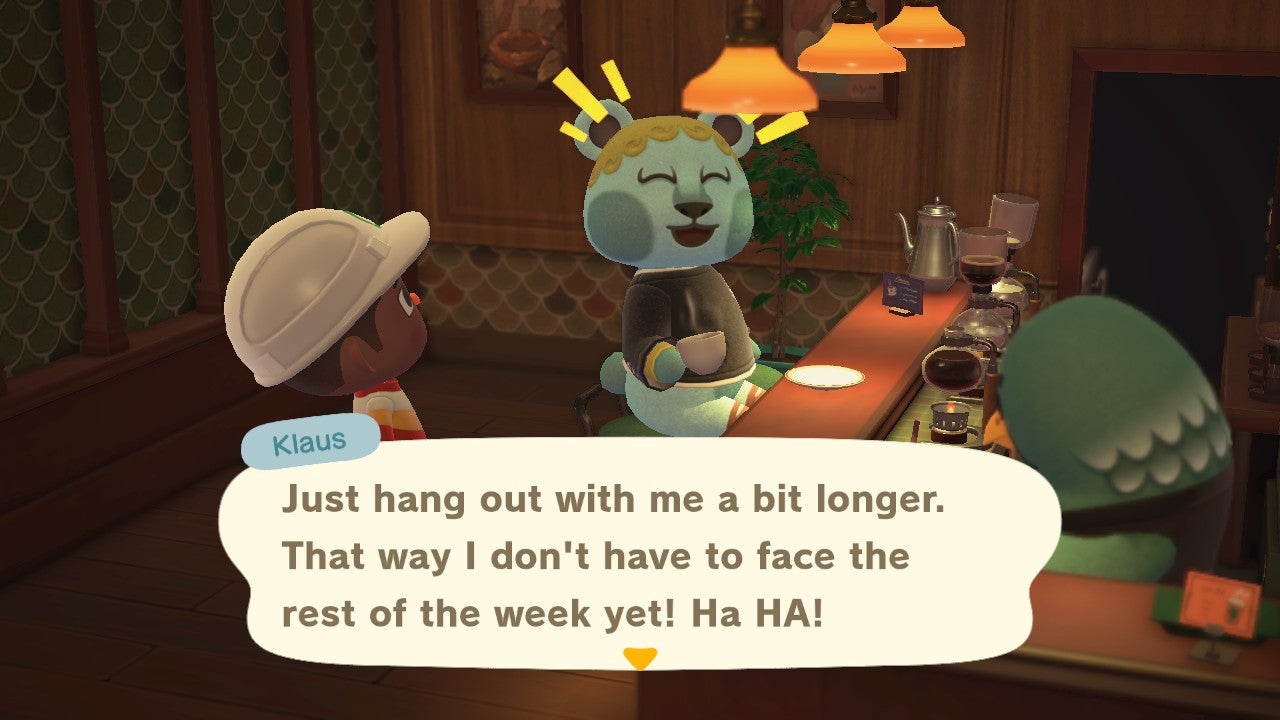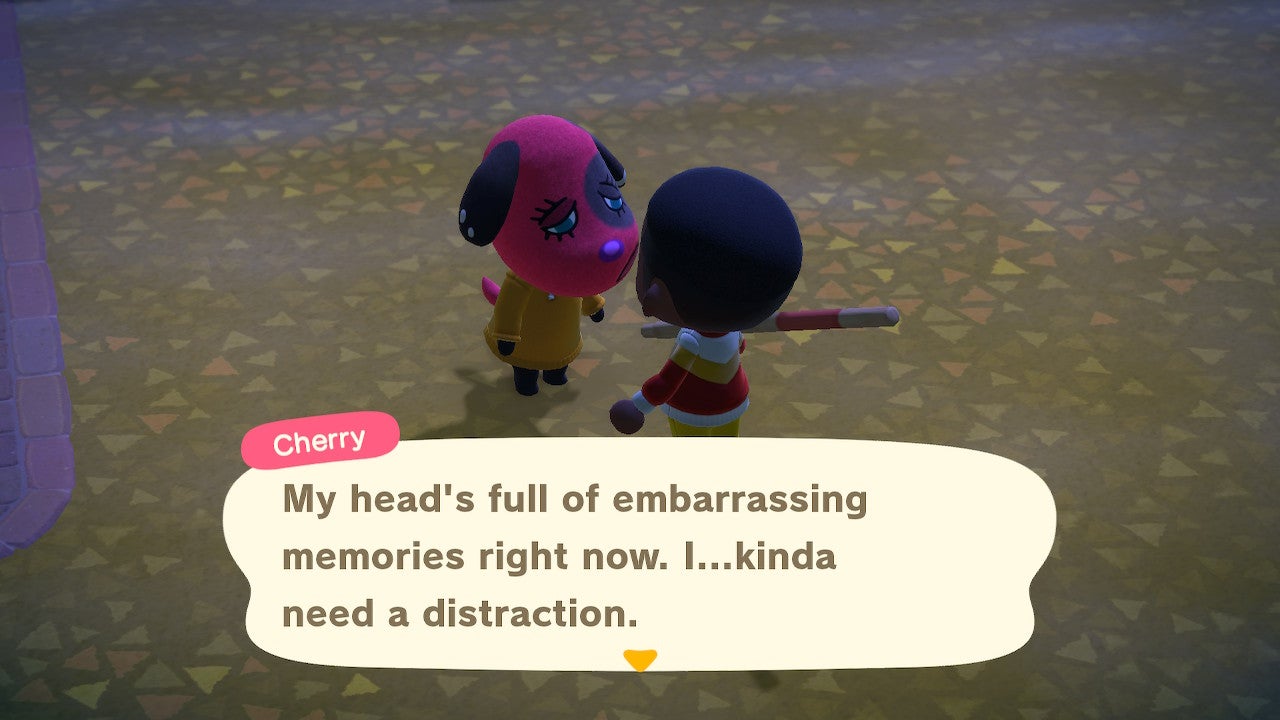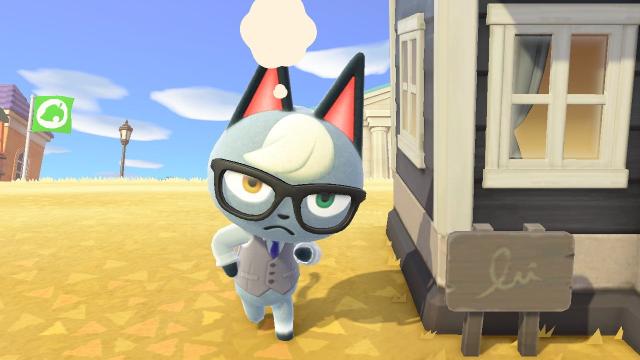Nintendo’s Animal Crossing: New Horizons becomes a different sort of video game the more time you spend playing it. After completing an initial handful of tasks meant to turn your newly settled island into a place where other people want to live, and inviting a selection of neighbours to move in, the game backs off and gives you the freedom to just… chill out. At least that’s how it seems at first.
As a social simulation game with a focus on small acts of kindness and taking one’s time, none of Animal Crossing’s stakes are particularly high. Though collecting bugs and fish and beautifying one’s island are some of its core elements of gameplay, interacting with other villagers is truly the main “point” of the game because they’re designed to be the most dynamic thing about your new neighbourhood. Different villagers will squabble with one another, catch colds, and come over to your house in moments when they need a bit of a pick-me-up. As your bonds with them grow, they’ll take to calling you by nicknames and gifting you with items to show you how much your friendship means. It can all be quite the lovely, serotonin-releasing experience if you don’t mind small talk.
In cases where the villagers living on your island are people you actually get along with, this facet of Animal Crossing is a feature built into the game to keep you coming back day-to-day. But as anyone who’s spent time playing Animal Crossing can attest to, it’s not hard to end up living with a bunch of villagers whose presences turn the game into a stressful chore instead of the calming escape it’s meant to be.

Once you’ve settled a certain number of villagers, and opened different shops and the museum on your island, Animal Crossing really gives you the space to spend your time however you’d like. The game doesn’t force you to spend hours meticulously reshaping your island by hand, but gaining the ability to carve out new rivers and build up new mountains feel like some of the biggest goals you’re meant to be working toward once the game’s “main story” ends. Animal Crossing islands are like bonsai trees in how, through patience and painstaking attention to detail, you can cultivate them into intricate works of art whose forms are reflections of your aesthetic sensibilities. But once you really hunker down and set to transforming your island into the sort of digital paradise that brings you joy whenever you turn your Switch on, Animal Crossing’s design will remind you how important it is to understand that other villagers are part of the landscape, as well.
When you first begin playing New Horizons, it can be difficult — if not impossible — to imagine what kind of place you’re going to eventually want to turn it into or where things should go. Though you have the ability to choose where your island’s first buildings will go and where your neighbours will live, their identities are randomised, meaning that there’s no way of knowing who exactly is going to try to move in. Animal Crossing’s gods may smile upon you and send one S-tier villager after another your way, but it’s far more likely that you end living near at least a few folks who you absolutely cannot stand for one reason or another — a situation many people can relate to.
More so than chunks of the island itself, unwanted villagers are perhaps the biggest obstacle that Animal Crossing throws your way, but unlike tedious reconstruction projects and the time they take to complete, the difficulty with other villagers can be a bit more abstract. It’s easy enough to force current residents to pack their things up and leave your island using Amiibo cards to invite new specific characters to come visit and eventually take the vacated spots. Villagers will also sometimes express to you that they’re ready to leave the island, and you can wish them farewell knowing that someone else will be there soon. But what can be difficult is getting to a point where you’re comfortable following through on that decision.
After falling prey to the New Horizon craze in the early days of the covid-19 pandemic, I quickly found myself living on an island that I enjoyed, but never quite loved. Various works-in-progress like laying down footpaths and giving everyone fenced-in gardens became sources of stress that kept me away from the island, and being able to see the true source of my frustration: the island’s residents whose vibes were just off. It’s hard to think about building outdoor monuments and excavation sites when your mind’s partially occupied worrying about a house that’s simply in the way and occupied by someone you wish lived somewhere else.

Free as Animal Crossing mostly lets you be in its endgame, its insistence on slow-paced play remains rather consistent throughout in a way that makes the process of switching up your island’s roster a somewhat lengthy process that can involve a few days’ worth of real-time waiting. Between the time, space, and mental energy it sometimes takes to pull a “better” villager, trying to do so can be a frustrating experience that ends up turning the game into a source of stress rather than relaxation. In situations where you’ve got a full island as well as construction projects dependent on people’s houses being rearranged, trying to make sure that an especially obnoxious villager gets the message that they should be looking for a new place to live can be a sore spot. It makes the game as a whole feel like more work than it’s really worth. Animal Crossing can certainly be that if you let it, and if you refuse to accept that the game doesn’t truly want to give you complete control over everything, but it doesn’t have to be.
Animal Crossing: New Horizons doesn’t warn you that you may suffer from bouts of intense decision paralysis while playing, even though that’s very much the case once you’ve been at it for a while and start thinking about getting creative. When it comes to things like planting flowers, the best way to get over that hurdle is to just try it out and see how you feel, knowing that it can always be undone with a few button presses. With villagers, though, the best course of action truly is to simply let them go, understanding that the beauty of whatever is going to happen next lies in it being unknown. Even when they’re getting on your nerves, saying goodbye to your Animal Crossing neighbours can be a daunting task, because there’s always the possibility that their departure’s just the first step towards someone even worse moving in. Looked at in a more optimistic light, though, letting those villagers go is one of the most freeing things you can do in Animal Crossing, and one that’s almost certain to make playing it feel fresh whether you’re an old timer or just setting out.
Animal Crossing is in stores now.
Wondering where our RSS feed went? You can pick the new up one here.
Editor’s Note: Release dates within this article are based in the U.S., but will be updated with local Australian dates as soon as we know more.
